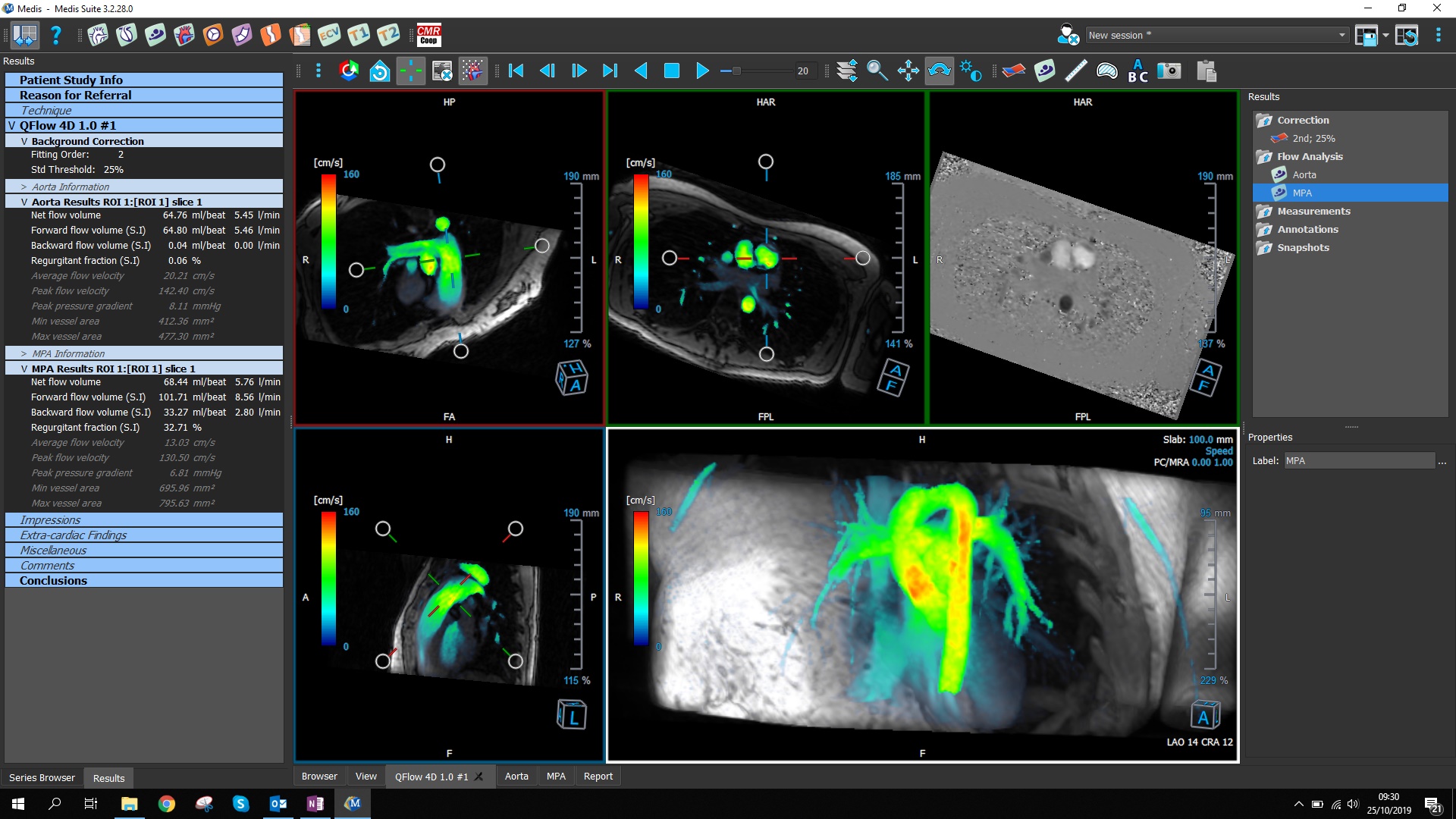
LEIDEN, Netherlands, 4-Nov-2019 — /EPR HEALTHCARE NEWS/ — Innovative cardiovascular imaging technology solutions developer Medis today announced a new module for the company’s Medis Suite MR. The new 4D Flow module is intuitive and easy to use, and provides essential, practical tools to enable 4D flow to be incorporated into clinical routine and to allow the measurement of flow volumes from a single 4D flow scan instead of multiple 2D flow scans – reducing complexity and easing the process.
“With 2D flow scans, reconstructions must be planned while the patient is on the table,†said Hans Brons, CEO. “For complex scan protocols, this can be tedious and challenging – and the post-processing can be both time-consuming and complex. With the help of this new module for Medis Suite MR, it is now possible to acquire flow in 4D from a single scan and to create flow plane reconstructions retrospectively, allowing the complexity of HeartMRI scans to be reduced substantially – and also reducing the time it takes. This is especially relevant for paediatric HeartMRI units as well as units scanning patients with grown up congenital heart disease.â€
Among its numerous differentiators, the new module is advantaged by its ease of use with an intuitive GUI, as well as single click noise removal and single click background offset correction.
As well as reducing the time taken, the new 4D Flow module supports the experienced MR technician in being more effective, more productive and able to deliver better diagnostic information. In addition to reducing the time taken, the new module is straightforward to learn and use for measuring flows in a variety of vessels, allowing the efficient incorporation of 4D Flow post processing in daily clinical practice.
The new 4D Flow module for Medis Suite MR is part of a wide-ranging suite of enhancements for the platform, including the 3D View module – further reducing the time needed for post-processing. In the 3D View module, a double caliper has been added for simple measurements. In addition, loading speed has been increased and it is now also possible to create straightened CPRs (curved planar reformats). Finally, Medis Suite AutoQ pre-processing can now be enabled to run autonomously, initiating Deep Learning contour detection and other advanced algorithms automatically.
Based on over 15 years of experience with cardiac MR, and over 30 years of cardiovascular medical image analysis in general, Medis Suite MR is a vendor-independent post-processing solution for HeartMRI cases. The workflow in Medis Suite MR includes a practical HeartMRI viewer, advanced clinical applications and convenient reporting all in one, making it highly efficient to work with. Seamlessly embedded in the workflow are advanced clinical applications considered best-in-class by many, such as the renowned QMass® and QFlow® applications. In addition, highly innovative and cutting edge research apps such as QStrain RE and QMap RE are also integrated.
Able to run on any workstation, Medis Suite MR is simple to integrate within the hospital IT environment. Connecting it to the DICOM network is straightforward.
4DFlow is cleared for market in the US Market. Clearance approvals for Australia, Brazil, Canada and Europe are pending.
Further information on Medis and its products is available at https://www.medis.nl/
SOURCE: EuropaWire

